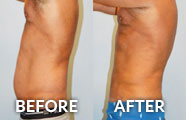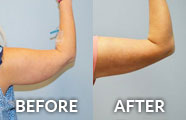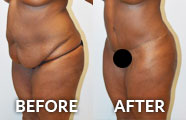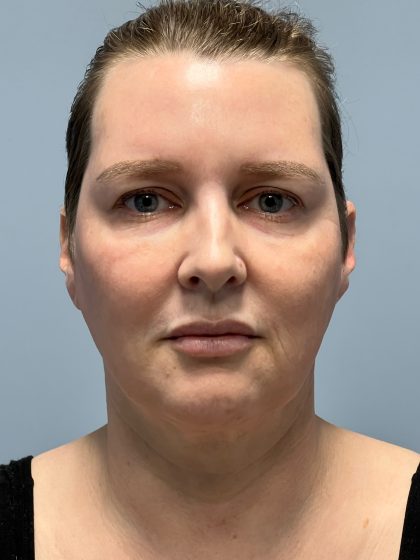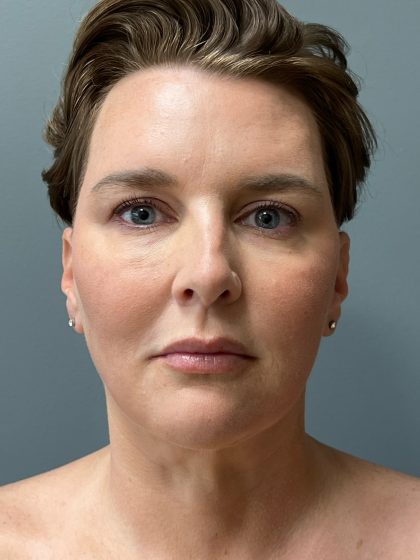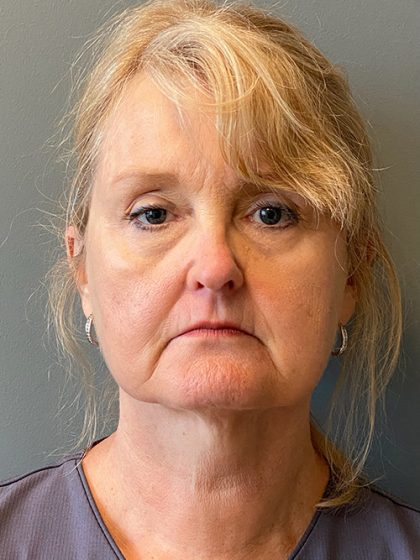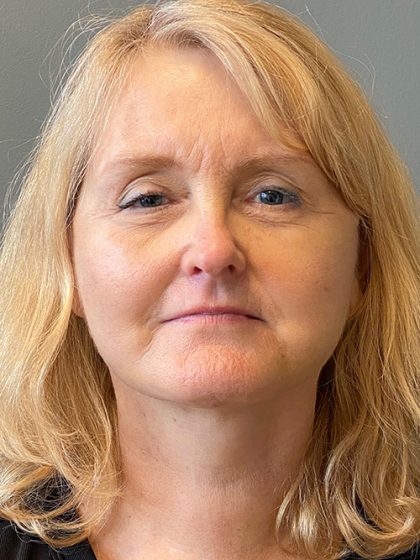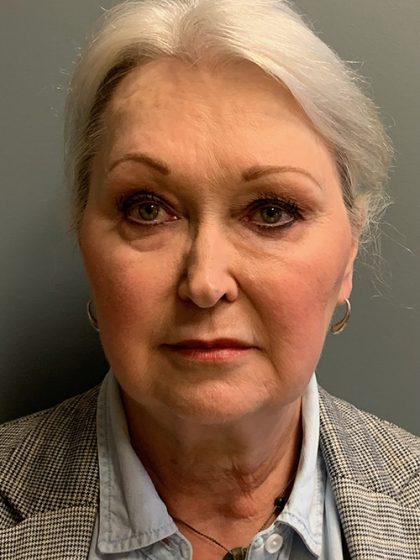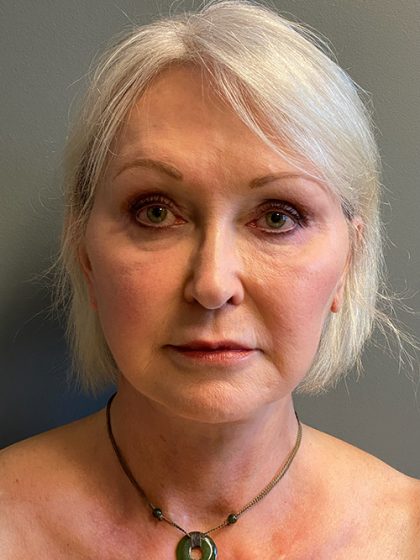Deep Plane Facelift
Consultations offered at our four convenient locations in Calhoun, GA, Chattanooga, TN, Ooltewah, TN and Blueridge, GA

A deep plane facelift is a procedure that involves tightening the underlying connective tissues of the face to resolve sagging facial tissues in the lower and mid-face. Lax skin and deep creases can be a hindrance to your confidence and make you appear older or more tired than you truly are. With a deep plane facelift, you can combat the aging process and feel as fresh and revived as you feel on the inside. A deep plane facelift is a more comprehensive take on the standard facelift and can correct hollowing in the mid-cheek area, drooping jowls, and pronounced nasolabial folds.
At Southern Surgical Arts, we aim to provide patients with the confidence they need to be their most capable selves in their personal and professional lives. Our team of board-certified plastic surgeons can walk you through our facelift protocol- they will prioritize your needs from the moment of your first consultation to the end of your recovery. They will not only introduce you to the latest, safest, and most innovative approaches, but they also have extensive training in understanding unique patient desires.
To find out if you can benefit from the striking rejuvenation the deep plane facelift can offer you, call (888) 988-5682, visit one of our office locations offering surgical services, or inquire about our services with our contact form. We will answer any questions you may have as promptly as possible.
Before and After Photos
Contents
What is a Facelift?
A facelift, also commonly called a rhytidectomy, is a minimally invasive approach to creating tighter skin that provides natural elevation to the face as a whole. Believe it or not, surgeons performed the first facelifts in the early 1900s. Since these procedures only involved skin-deep changes, the results lasted only a short time, and it was difficult for surgeons to perform them without making large incisions. However, in the 1970s, Dr. Peyronie and Dr. Mitz discovered a connective tissue layer just beneath facial fat deposits that revolutionized the procedure: the superficial musculoaponeurotic systems (SMAS). By modifying the SMAS, surgeons today can contour and tighten the overlying skin without producing an unnatural “windswept” look.
The deep plane facelift technique is relatively new to the world of facelifts; Dr. Sam Hamra was the first to coin the term in 1990. (1) Since his days first uncovering the involved techniques of the deep plane facelift, surgeons have further improved upon his research.
At SSA, our surgeons are trained in the most modern approaches that involve the release of specific facial ligaments responsible for facial descent, repositioning of the malar fat pads under the cheekbones, and modifications to deeper facial muscles. Because of these changes, deep plane facelifts often produce more pronounced anti-aging effects. They also always include neck lift techniques to lift sagging skin from the neck area, providing a more uniform result throughout both the face and neck. In general, if you have significant facial aging, a deep plane may be the best course of action for you (2)
The Difference Between a SMAS Facelift and a Deep Plane Facelift
A SMAS facelift involves techniques of tightening the SMAS by first separating it from the skin, creating two layers of tissue that surgeons work with. A deep plane facelift promotes better preservation of facial blood supply since surgeons keep the SMAS and skin together as one tissue. The deep plane also incorporates deeper muscles, fat pads, and ligaments, whereas SMAS lifts are not this extensive.
Benefits of the Deep Plane Facelift
The deep plane technique can create incredible outcomes that target several areas of concern:
- Jowls- the excess tissue that develops on the jawline
- Deep creases of both the mid and lower portions of the face
- Nasolabial folds
- Lower eye bags (1)
- Sagging “turkey neck” tissues
With just two subtle incisions hidden within the creases of each ear and the hairline, your surgeon can access the underlying tissues and create results that will last 10 years or more.
Personal Consultation
Scheduling a consultation at Southern Surgical Arts will help you make an informed decision for your health and well-being. Your SSA surgeon will work with you to make sure you have an in-depth consultation that serves to answer your various questions and concerns, so please come prepared. They will begin by assessing your facial features and the specific problems you would like to address with a facelift. They will explain the benefits of the deep plane facelift, the details of other types of facelifts, and other non-surgical approaches you may want to consider. To take the first step today, call (888) 988-5682 or get in touch with us via our online form, and an SSA staff member will assist you in scheduling an appointment at the location nearest to you
Preparation
Your surgeon will evaluate your medical history and the current medications and supplements you are taking. Certain substances with blood-thinning properties can increase bleeding risk, so you should aim to stop your use of these medications before your procedure. SSA surgeons are most comfortable with performing facelifts on non-smoking patients, but they will make exceptions for those who are willing to quit all nicotine products for a few weeks before and after the surgery. Refraining from nicotine encourages and improves overall blood circulation and the body’s healing processes. Finally, your surgeon will advise you to make plans to take time off of work and to arrange for someone to escort you home after you are discharged same-day from the hospital.
Procedure Steps
To begin, an SSA anesthesiologist will place you under general anesthesia, so you will be fully unaware for the duration of the procedure. Next, your surgeon will make one small incision from the front outline of your ear and extend it to the lower portion of your temple, ensuring that it is as discreet and precise as possible. From this one incision, your surgeon will be able to access the underlying SMAS connective layer that provides structure to the whole face. They will lift the SMAS to erase creases and folds in the middle and lower parts of the face. From this incision, they will also elevate fat pads and muscles to accentuate shapely cheeks, release certain restraining ligaments, and remove excess skin at the end. They will then repeat the process for the other side of the face, performing the same techniques to promote symmetry.
For the neck lift aspect, your surgeon will make a tiny incision in the submental region- the area under your chin. They will lift the platysma muscle, a superficial muscle and vital component of the neck and lower face. Finally, they will place tension on the skin and remove any unnecessary excess.
Recovery and Results
After your surgery, you will be in some discomfort due to swelling and bruising, but your prescribed medications will keep it under control. Your surgeon will require that you keep your post-procedure bandages for the next 2 days to protect the incisions as much as possible. Within a week, you will have to return for a follow-up visit, and your surgeon will remove the sutures. The initial side effects will have worn off significantly within the first week, but it is normal to expect residual swelling that lasts 2 weeks or more. It will likely be safe enough to return to work once you begin to see significant improvements, though, you will need to wait a month or more before returning to the gym and other more strenuous physical activities.
As the results settle in over the following weeks, patients will gradually see a drastic difference in their facial contour and skin quality, particularly around the jawline. The deep plane facelift does not just fix cosmetic issues at the surface level, but the underlying structures that weaken with age are revitalized– creating results you will love for the next several years.
Cost of a Deep Plane Facelift in Chattanooga
The cost of your deep plane facelift will greatly depend on anesthesia fees, preparatory medical tests, medications, and other related surgical fees. At SSA, we understand that patients need affordable care, so consider applying for one of our available financing options with Alphaeon Credit or CareCredit which will enable you to make payments over time.
If you feel ready to speak with one of our surgeons concerning your aesthetic issues, call (888) 988-5682, fill out our online application or visit our Calhoun, GA or Chattanooga, TN office.
To get to know more about our medspa services, read our blog, or visit one of our non-surgical offices
FAQ
What is the difference between a deep plane facelift and a traditional facelift?
The main difference between a deep plane facelift and a traditional facelift lies in the depth of tissue addressed during the surgery. A traditional facelift primarily focuses on tightening and repositioning the superficial layers of the skin. In contrast, the deep plane facelift involves lifting and repositioning the deeper layers of facial tissue, resulting in more comprehensive and long-lasting rejuvenation.
Who is a suitable candidate for a deep plane facelift?
Ideal candidates for a deep plane facelift are individuals who have significant signs of aging in the midface and lower face, including sagging skin, deep folds, and jowls. Good overall health, realistic expectations, and a commitment to following pre and post-operative instructions are also important factors.
Does it take longer to recover after a deep plane facelift?
Recovery time can vary from patient to patient, but most individuals can expect some swelling and bruising for the first week or two following surgery. It is common to experience tightness and mild discomfort during this initial healing period. However, any pain is typically well-managed with prescribed medication. Patients should plan to take about two weeks off from work or social activities to ensure proper healing and minimize any potential complications.
References
- Raggio BS, Patel BC. Deep Plane Facelift. PubMed. Published 2021. https://www.ncbi.nlm.nih.gov/books/NBK545277/
- Plane Facelift/Rhytidectomy. Facial Plastic Surgery. 2020;36(04):376-385. doi:https://doi.org/10.1055/s-0040-1714118
